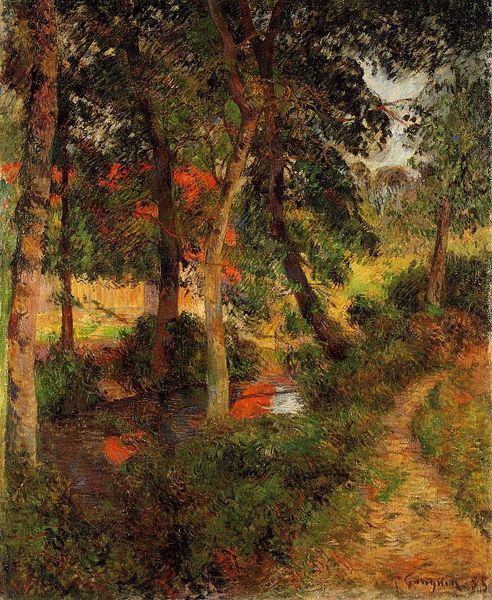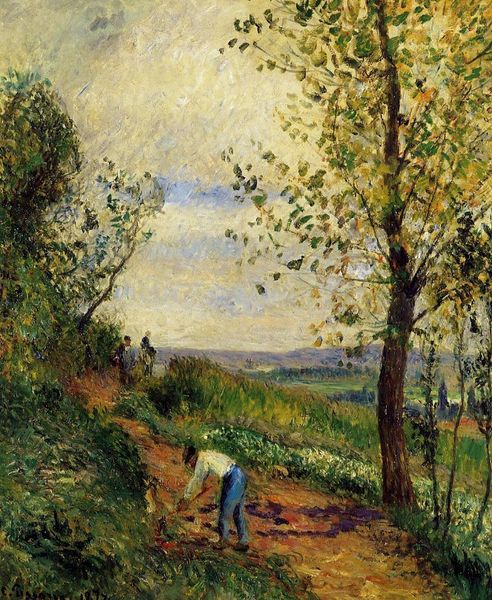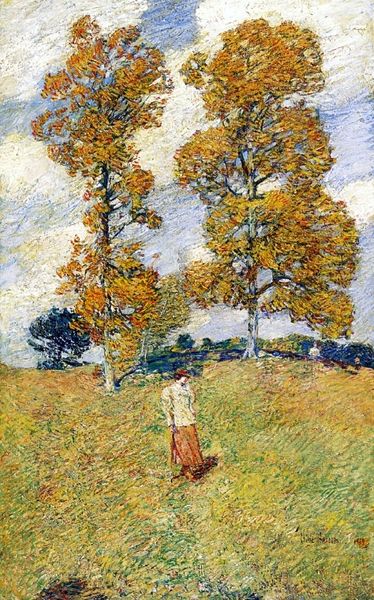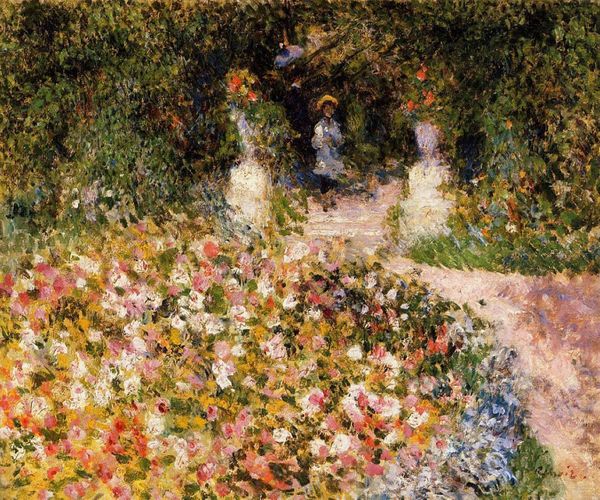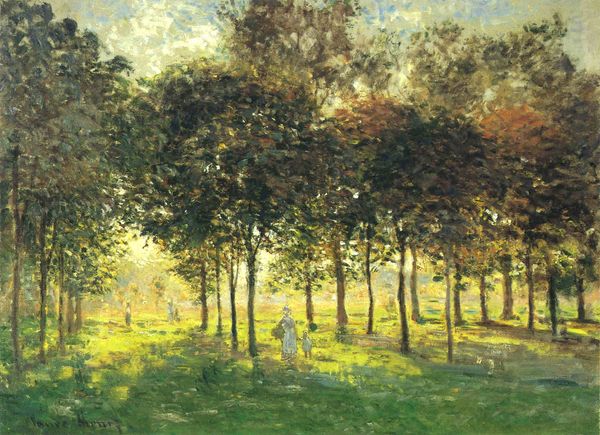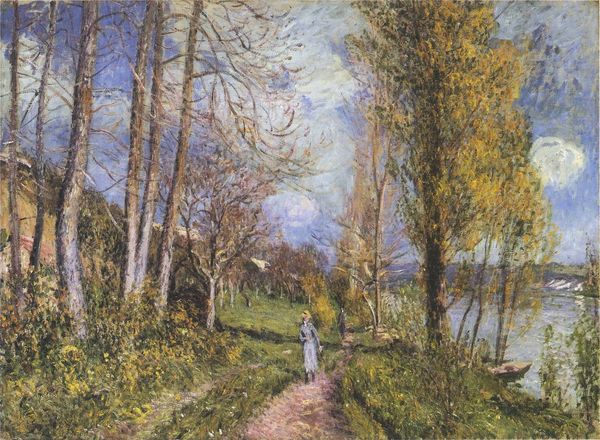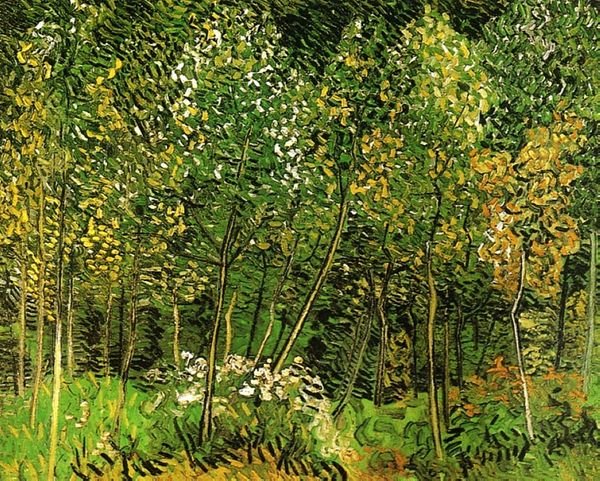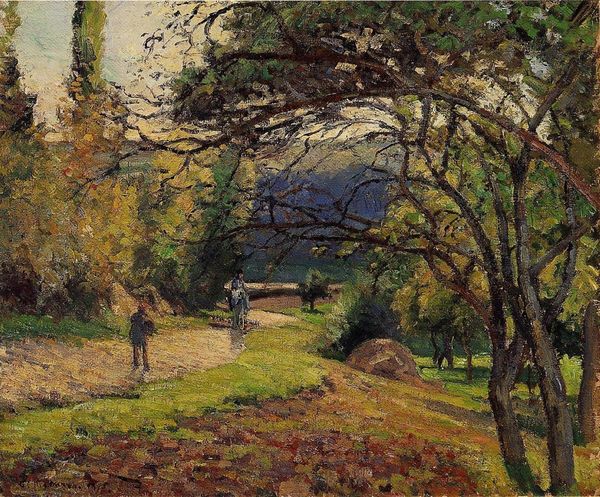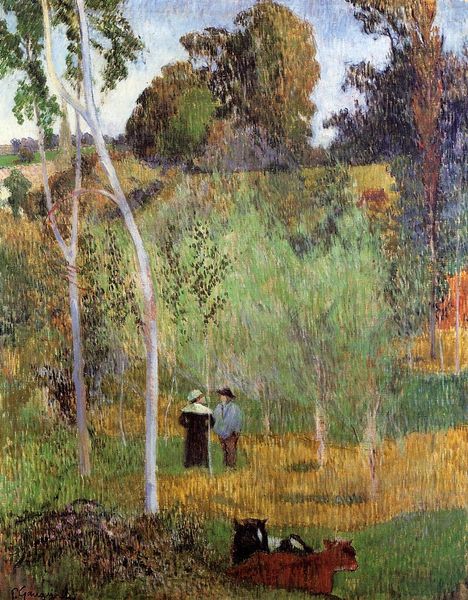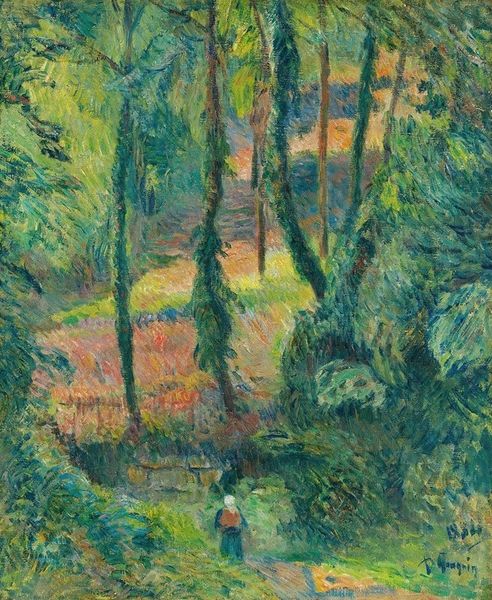
painting, oil-paint
#
portrait
#
tree
#
painting
#
oil-paint
#
landscape
#
figuration
#
nature
#
oil painting
#
child
#
naturalistic tone
#
natural-landscape
#
genre-painting
#
post-impressionism
#
realism
Copyright: Public domain
Paul Gauguin’s painting "Pont-Aven woman and child" is made with oil on canvas, using techniques that challenge the traditions of academic painting. Look closely, and you’ll see that Gauguin has opted for a deliberate flatness, simplifying forms and using colour to define shapes rather than create illusions of depth. The visible brushstrokes, applied in short, rhythmic dashes, speak to a direct engagement with the material. It's as if Gauguin is making no attempt to hide the labour involved in creating the artwork. In his choice of subject, depicting everyday life in rural Brittany, Gauguin turns away from the industrialized world and romanticizes a simpler, more 'authentic' existence. However, the very act of painting and selling such scenes implicates him in the art market, a system deeply tied to capitalist structures. Gauguin is walking a tightrope, celebrating the handmade while navigating the complexities of an increasingly commercialized world. It is this tension that gives the painting its enduring power.
Comments
No comments
Be the first to comment and join the conversation on the ultimate creative platform.
